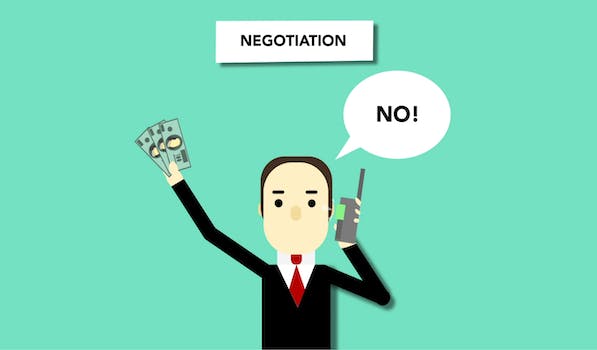How To Put Yourself On A Budget And Save Money
“Take control of your finances and achieve your savings goals with these simple budgeting tips.”
Introduction
Putting yourself on a budget and saving money is an important step towards financial stability and achieving your financial goals. It requires discipline, planning, and a willingness to make sacrifices in the short term for long-term financial gain. In this article, we will discuss some practical tips on how to put yourself on a budget and save money.
Creating a Realistic Budget Plan
Are you tired of living paycheck to paycheck? Do you want to save money but don’t know where to start? The first step is to create a realistic budget plan. A budget plan is a financial roadmap that helps you track your income and expenses. It allows you to see where your money is going and helps you make informed decisions about your spending. Here are some tips on how to put yourself on a budget and save money.
1. Determine your income
The first step in creating a budget plan is to determine your income. This includes your salary, bonuses, and any other sources of income. If you have a variable income, such as freelance work, use an average of your income over the past few months to create a realistic budget.
2. List your expenses
Next, list all of your expenses. This includes your rent or mortgage, utilities, groceries, transportation, entertainment, and any other expenses you have. Be sure to include both fixed expenses, such as your rent, and variable expenses, such as your grocery bill.
3. Categorize your expenses
Once you have listed all of your expenses, categorize them into essential and non-essential expenses. Essential expenses are those that you need to live, such as your rent, utilities, and groceries. Non-essential expenses are those that you can live without, such as eating out or buying new clothes.
4. Set a budget for each category
Now that you have categorized your expenses, set a budget for each category. Start with your essential expenses and allocate a certain amount of money for each category. For example, if your rent is $1,000 per month and your utilities are $200 per month, allocate $1,200 for your housing expenses. Do the same for your other essential expenses.
5. Cut back on non-essential expenses
If you find that you are spending too much on non-essential expenses, it’s time to cut back. Look for ways to save money, such as cooking at home instead of eating out, or canceling subscriptions that you don’t use. You don’t have to cut out all non-essential expenses, but reducing them can help you save money.
6. Track your spending
Once you have set your budget, it’s important to track your spending. This will help you see where your money is going and make adjustments if necessary. You can use a spreadsheet or a budgeting app to track your spending.
7. Review and adjust your budget
Finally, review your budget regularly and make adjustments as needed. If you find that you are consistently overspending in a certain category, adjust your budget accordingly. If you receive a raise or a bonus, consider increasing your savings or paying off debt.
Putting yourself on a budget and saving money takes discipline and commitment. But with a realistic budget plan, you can take control of your finances and achieve your financial goals. Remember to be flexible and make adjustments as needed, and don’t be too hard on yourself if you slip up. With time and practice, you can become a budgeting pro and achieve financial freedom.
Cutting Back on Unnecessary Expenses

Are you tired of living paycheck to paycheck? Do you want to save money but don’t know where to start? Putting yourself on a budget is a great way to take control of your finances and start saving. In this article, we’ll discuss how to cut back on unnecessary expenses and save money.
The first step in putting yourself on a budget is to track your spending. This means keeping track of every penny you spend, from your morning coffee to your monthly rent payment. Once you have a clear picture of where your money is going, you can start to identify areas where you can cut back.
One of the easiest ways to cut back on expenses is to reduce your dining out budget. Eating out can be expensive, especially if you’re doing it multiple times a week. Instead, try cooking at home more often. Not only is it cheaper, but it’s also healthier. You can also try meal prepping on the weekends to save time during the week.
Another area where you can cut back is on your entertainment budget. Instead of going out to the movies or concerts, try finding free or low-cost activities in your area. Many cities offer free outdoor concerts or movie screenings during the summer months. You can also try hosting a game night with friends instead of going out to a bar.
If you’re a shopaholic, cutting back on your shopping budget can be a challenge. One way to do this is to unsubscribe from email newsletters and unfollow brands on social media. This will help reduce the temptation to buy things you don’t need. You can also try setting a monthly shopping budget and sticking to it.
Another way to save money is to reduce your transportation costs. If you live in a city with good public transportation, try taking the bus or subway instead of driving. If you do need to drive, try carpooling with coworkers or friends to save on gas and parking costs.
Finally, consider cutting back on your utility bills. This can be as simple as turning off lights and electronics when you’re not using them, or adjusting your thermostat a few degrees to save on heating and cooling costs. You can also try switching to energy-efficient light bulbs and appliances to save even more.
Putting yourself on a budget can be challenging, but it’s worth it in the long run. By cutting back on unnecessary expenses, you can start saving money and working towards your financial goals. Remember to track your spending, identify areas where you can cut back, and stick to your budget. With a little discipline and determination, you can take control of your finances and start saving today.
Finding Ways to Increase Income
Are you tired of living paycheck to paycheck? Do you want to save more money but don’t know where to start? Putting yourself on a budget is a great way to take control of your finances and start saving. But what if you’re already living frugally and still struggling to make ends meet? One solution is to find ways to increase your income. Here are some tips to help you do just that.
1. Start a side hustle
One of the easiest ways to increase your income is to start a side hustle. This could be anything from selling handmade crafts on Etsy to driving for Uber or Lyft. The key is to find something that you enjoy and that fits into your schedule. Not only will a side hustle bring in extra cash, but it can also be a fun way to explore your passions and hobbies.
2. Freelance or consult
If you have a particular skill or expertise, consider freelancing or consulting. This could include anything from writing and editing to graphic design or web development. Many companies are looking for freelancers to help with projects, and you can often set your own rates and schedule. Just be sure to market yourself effectively and build a strong portfolio to showcase your work.
3. Rent out your space
If you have a spare room or a vacation home, consider renting it out on Airbnb or other vacation rental sites. This can be a great way to earn extra income, especially if you live in a popular tourist destination. Just be sure to do your research and follow all local laws and regulations.
4. Sell your stuff
Another way to increase your income is to sell items you no longer need or use. This could include anything from clothes and furniture to electronics and appliances. You can sell items online through sites like eBay or Craigslist, or hold a garage sale to get rid of multiple items at once. Not only will you make some extra cash, but you’ll also declutter your home in the process.
5. Take on odd jobs
Finally, consider taking on odd jobs to earn extra income. This could include anything from pet-sitting and house-sitting to lawn care and snow removal. You can advertise your services on social media or through local classifieds, or sign up for a platform like TaskRabbit to find jobs in your area. Just be sure to set clear expectations with clients and deliver quality work to build a strong reputation.
In conclusion, putting yourself on a budget is a great way to save money, but sometimes it’s not enough. By finding ways to increase your income, you can take control of your finances and achieve your financial goals. Whether you start a side hustle, freelance or consult, rent out your space, sell your stuff, or take on odd jobs, there are plenty of opportunities to earn extra cash. So why not give it a try and see how much you can save?
Using Cash Envelopes to Control Spending
Are you tired of living paycheck to paycheck? Do you want to save money but don’t know where to start? One effective way to put yourself on a budget and control your spending is by using cash envelopes.
Cash envelopes are a simple and effective way to manage your money. The concept is straightforward: you allocate a certain amount of cash for each category of your budget, such as groceries, entertainment, and transportation. You then put the cash in separate envelopes labeled with the category name. When you need to make a purchase, you take the cash from the appropriate envelope and use it to pay for the item.
Using cash envelopes has several benefits. First, it helps you stay within your budget. When you have a limited amount of cash for each category, you are less likely to overspend. Second, it helps you prioritize your spending. You can allocate more money to the categories that are most important to you and less to the ones that are less important. Third, it helps you avoid credit card debt. When you use cash, you are not borrowing money that you will have to pay back with interest.
To get started with cash envelopes, you need to create a budget. Start by listing all your monthly expenses, including fixed expenses such as rent or mortgage payments, utilities, and insurance, as well as variable expenses such as groceries, entertainment, and clothing. Be sure to include any irregular expenses, such as car repairs or medical bills, that may occur throughout the year.
Once you have a list of your expenses, allocate a certain amount of cash for each category. Be realistic about how much you can afford to spend in each category. If you find that you don’t have enough money to cover all your expenses, you may need to make some adjustments, such as cutting back on discretionary spending or finding ways to increase your income.
Next, label envelopes with the name of each category and put the appropriate amount of cash in each envelope. You can use any type of envelope, but it’s a good idea to use ones that are sturdy and can be reused. You can also use a wallet or a binder with pockets to keep your envelopes organized.
When you need to make a purchase, take the cash from the appropriate envelope and use it to pay for the item. Be sure to keep track of your spending by writing down each purchase on the envelope or in a notebook. This will help you stay within your budget and avoid overspending.
Using cash envelopes may take some getting used to, but it can be a powerful tool for controlling your spending and saving money. It’s important to be consistent and disciplined in using your envelopes. If you find that you are consistently overspending in a certain category, you may need to adjust your budget or find ways to reduce your expenses in that area.
In conclusion, using cash envelopes is a simple and effective way to put yourself on a budget and control your spending. By allocating a certain amount of cash for each category of your budget and using cash to pay for your purchases, you can stay within your budget, prioritize your spending, and avoid credit card debt. Give it a try and see how much money you can save!
Tracking Progress and Staying Motivated
Saving money can be a daunting task, but it is essential to secure your financial future. Putting yourself on a budget is the first step towards achieving your financial goals. However, sticking to a budget can be challenging, and it requires discipline and motivation. In this article, we will discuss how to track your progress and stay motivated while on a budget.
The first step towards tracking your progress is to set achievable goals. You need to have a clear understanding of what you want to achieve and how much money you need to save. For instance, if you want to save $5000 in six months, you need to save approximately $833 per month. Once you have set your goals, you can track your progress by monitoring your expenses and income.
Tracking your expenses is crucial in determining where your money is going. You can use a budgeting app or a spreadsheet to record your expenses. Categorize your expenses into fixed and variable expenses. Fixed expenses are those that remain constant every month, such as rent, mortgage, and car payments. Variable expenses are those that fluctuate every month, such as groceries, entertainment, and clothing. By tracking your expenses, you can identify areas where you can cut back and save money.
In addition to tracking your expenses, you need to track your income. Knowing how much money you earn is essential in determining how much you can save. If you have a steady income, you can set aside a fixed amount every month towards your savings. However, if your income fluctuates, you need to adjust your budget accordingly.
Once you have tracked your progress, it is essential to stay motivated. Saving money can be challenging, and it requires discipline and sacrifice. However, there are several ways to stay motivated while on a budget.
One way to stay motivated is to reward yourself for achieving your goals. For instance, if you have saved $1000 in three months, you can treat yourself to a nice dinner or a weekend getaway. Rewards can help you stay motivated and focused on your goals.
Another way to stay motivated is to find a support system. Talk to your friends and family about your financial goals and ask for their support. You can also join online communities or forums where people share their experiences and tips on saving money. Having a support system can help you stay accountable and motivated.
Finally, it is essential to remind yourself of why you are saving money. Whether it is to pay off debt, buy a house, or save for retirement, having a clear understanding of your financial goals can help you stay motivated. Write down your goals and keep them in a visible place, such as your fridge or your desk. Whenever you feel discouraged, remind yourself of why you started and how far you have come.
In conclusion, putting yourself on a budget and saving money requires discipline, sacrifice, and motivation. Tracking your progress by monitoring your expenses and income is crucial in achieving your financial goals. Staying motivated can be challenging, but rewarding yourself, finding a support system, and reminding yourself of your goals can help you stay on track. Remember, saving money is a journey, and it takes time and effort, but the rewards are worth it.
Conclusion
Conclusion: Putting yourself on a budget and saving money is a crucial step towards financial stability and achieving your financial goals. By tracking your expenses, creating a budget, and finding ways to cut back on unnecessary spending, you can take control of your finances and start building a solid financial foundation for your future. Remember, every small step you take towards saving money can make a big difference in the long run.






